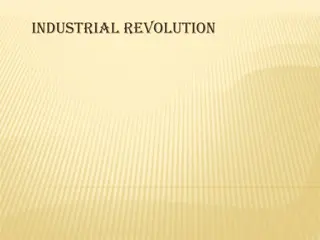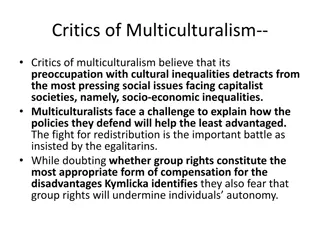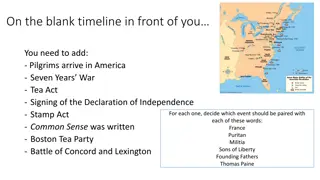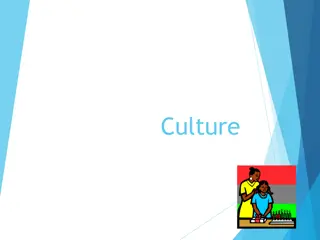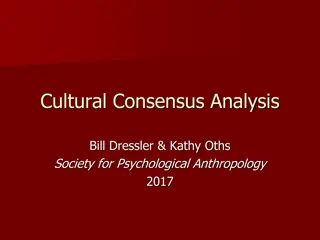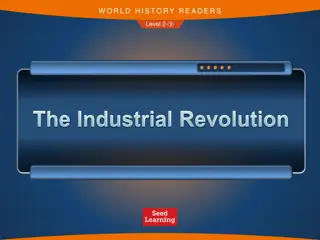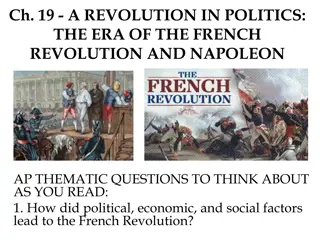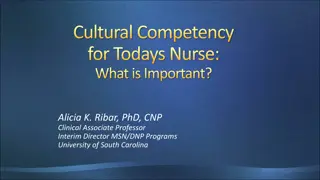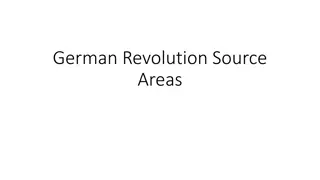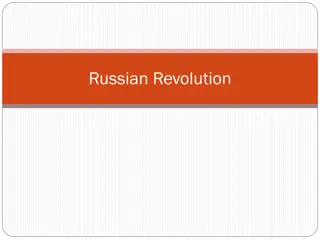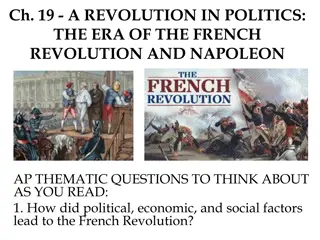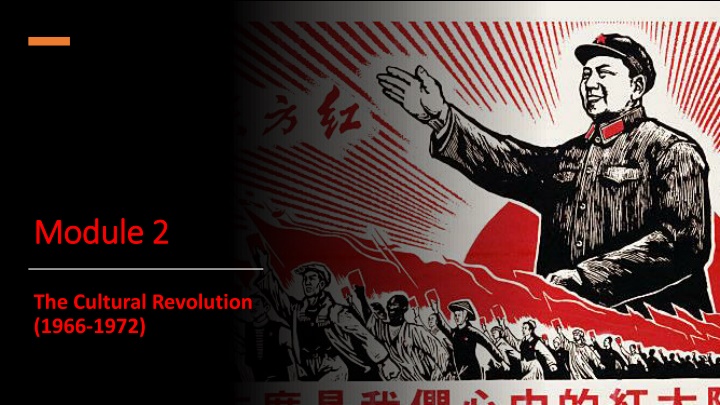
Understanding the Cultural Revolution: Origins, Consequences, and Key Figures
Explore the Cultural Revolution of 1966-1972, its origins, responsible figures, and long-term impacts. Delve into the political rivalries, popular energy, and the aftermath of the Great Leap Forward. Witness Mao's criticism, purges, and the turbulent phase I of the Cultural Revolution.
Download Presentation

Please find below an Image/Link to download the presentation.
The content on the website is provided AS IS for your information and personal use only. It may not be sold, licensed, or shared on other websites without obtaining consent from the author. If you encounter any issues during the download, it is possible that the publisher has removed the file from their server.
You are allowed to download the files provided on this website for personal or commercial use, subject to the condition that they are used lawfully. All files are the property of their respective owners.
The content on the website is provided AS IS for your information and personal use only. It may not be sold, licensed, or shared on other websites without obtaining consent from the author.
E N D
Presentation Transcript
Module 2 Module 2 The Cultural Revolution (1966-1972)
Major Questions: What was the Cultural Revolution? Who was responsible for the Cultural Revolution? What were the origins of the Cultural Revolution? What were the long-term consequences of the Cultural Revolution?
Module 1 Question: When did the Cultural Revolution begin, who launched it, and Why? Why did so many Chinese citizens go along with the Cultural Revolution?
Module Theme: Political Rivalries & Popular Energy
After the Great Leap Forward 1961-1965 Under Liu Shaoqi and Deng Xiaoping Agricultural Production Bounces Back Grain Output Up: 193,000,000 (1961) tons to 240,000,000 (1965) Urban Industrial Production Bounces Back Industrial Production Up: 11% Growth Rate (Annually) 7% Industrial Employment Growth (Annually) Productivity Up 5.5 Percent Annually Cities Grew Quickly, The Countryside Grew Slowly Healthcare and Education Unevenly Distributed
Mao Criticized (1962- 1965)? Angry Mao: Mao believed he was treated as a dead ancestor. Deng Xiaoping never came to consult me. From 1959 to the present (1966) he has never consulted me over anything at all. Critics of Mao: Wu Han s Hai Rui Dismissed from Office A Great Leap Forward play made with Mao s approval to combat dishonest reporting of output figures. Hai Rui was an honest Ming official who lost his job after challenging a tyrannical emperor. Jiang Qing and Yao Wenyuan argued the play was an attack on Mao. Yao Wenyuan: The play misrepresented the history and contained messages that aimed to push people to demolish the people s communes. Anyone wanting to overthrow a political regime must create public opinion and do some preparatory ideological work.
The Cultural Revolution (Phase I): The Political Phase Begins in 1965-1966 with attacks on Wu Han Academic to Political Creation of the Central Cultural Revolution Group Including Yao Wenyuan & Jiang Qing (Mao s wife) Early Purges (1966) Liu Ruiqing 40 Years as a member of the CCP Long military and security career Crimes: Anti-party activity, suicide attempt Peng Zhen 40 Years of service in CCP Crime: Accused of being an associate of Wu Han Politburo Standing Committee Liu Shaoqi, Zhou Enlai, Zhu De, Deng Xiaoping (fail to intervene)
Cultural Revolution first spreads to the people through universities. May 25, 1966: Nie Yuanzi posts first big character poster at Beijing University attacking the university president for suppressing student discussions of the Wu Han affair. Poster reproduced throughout China Liu Shaoqi & Deng attempts to control the movement with work teams. Cultural Revolution (Phase II): The Red Guard Phase
The Red Guard Bombard the Headquarters (August 1966) Mao pens letter in support of Red Guard. But in the last fifty days or so some leading comrades from the central down to the local levels have acted in a diametrically opposite way. Adopting the reactionary stand of the bourgeoisie, they have enforced a bourgeois dictatorship and struck down the surging movement of the great cultural revolution of the proletariat How poisonous! Viewed in connection with the Right deviation in 1962 and the wrong tendency of 1964 which was Left in form but Right in essence, shouldn t this make one wide awake? Tens of Millions of Red Guards It is justified to Rebel destruction before construction Free Travel Destroy the Four Olds Old Ideas Old Culture Old habits Old Customs
Eliminating Maos Rivals (1968-1969) Mao s & the Red Guard Mao maintained loose political and ideological control Used the Cultural Revolution to attack his rivals Deng and Liu the most dangerous capitalist roaders Deng Xiaoping deposed sent to work in a tire factory (1969) Liu Shaoqi was accused of being an enemy of the people. He was subsequently denounced, imprisoned, beaten, denied medication. Dies in November of 1969.
Fate of the Red Guard & Ultra-Leftist 1968 Red Guard suppressed by People s Liberation Army. At times involving military engagements 1968 Mao publishes order banishing the Red Guard youths from China s cities. Between 1968 and 1980, 17,000,000 Red Guard are sent to live in the countryside. Lost Generation Many would not return until into the 1980s
The Cultural Revolution through 1972 Mao s weapon to revive the Chinese Revolution & Neutralize his rivals. 3,000,000 party and government officials lost their jobs. 500,000 people killed or committed suicide.
Question Review What was the Cultural Revolution? Who was responsible for the Cultural Revolution? What were the origins of the Cultural Revolution? What were the long-term consequences of the Cultural Revolution? Module Questions When did the Cultural Revolution begin, who launched it, and Why? Why did so many Chinese citizens go along with the Cultural Revolution?

